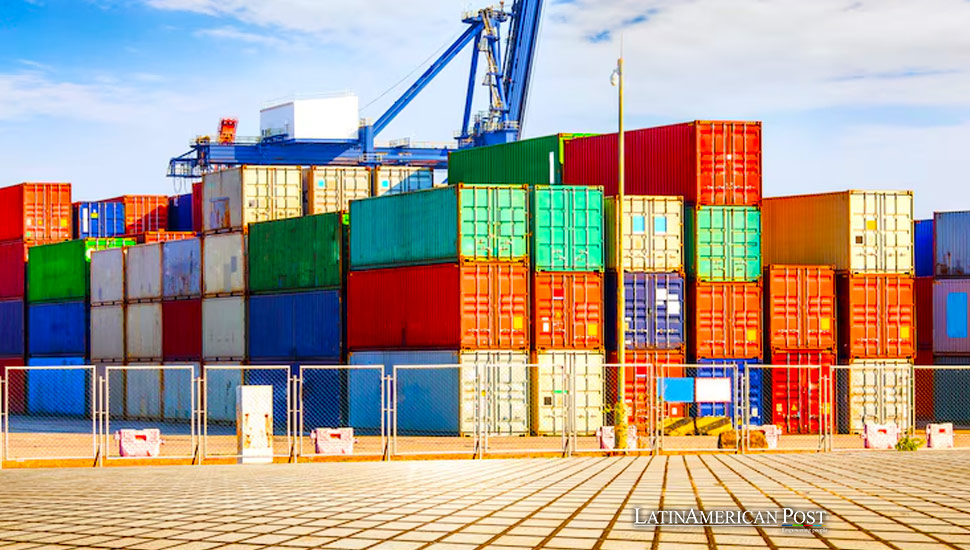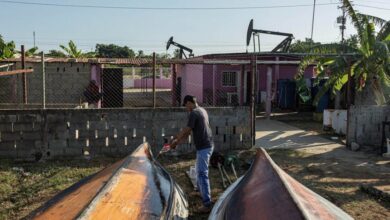Mexico Requires $400 Billion Investment by 2032 to Maximize Nearshoring Opportunities

Mexico needs over $400 billion in infrastructure investment by 2032 to fully capitalize on nearshoring opportunities. Key areas include water, energy, transportation, and industrial parks, highlighting the urgency for strategic development and public-private partnerships.
As global manufacturing strategies shift towards nearshoring, Mexico stands poised to become a critical hub for relocated production facilities. However, to seize this opportunity, the nation requires a substantial investment in infrastructure, exceeding $400 billion by 2032. Rogelio Jiménez Pons, the Undersecretary of Transport of the Secretariat of Infrastructure, Communications, and Transport (SICT), outlined this ambitious target during a recent virtual seminar hosted by the College of Civil Engineers of Mexico.
Nearshoring, the practice of relocating manufacturing closer to the consumer market, offers significant advantages in terms of cost savings, reduced transit times, and supply chain resilience. Mexico’s proximity to the United States and Canada, coupled with competitive labor costs and favorable trade agreements like the United States-Mexico-Canada Agreement (USMCA), positions it as a prime candidate for this trend. However, Mexico must address its current infrastructural deficiencies to harness these benefits fully.
Infrastructure Investment Breakdown
Jiménez Pons presented preliminary studies conducted by the Mexican government in collaboration with consultancy firm MacKenzie. According to these findings, the most pressing areas for Investment include water infrastructure and industrial water demand, which are projected to increase between 34% and 54% over the next eight years, necessitating investments of up to $27 billion. In the energy sector, electricity generation must increase by 53%, requiring approximately $79 billion in assets. The most significant Investment, up to $250 billion, is needed to upgrade Mexico’s transportation infrastructure, which is crucial for efficient logistics and supply chain management. Developing new industrial parks will require around $48 billion to support the expected influx of manufacturing facilities. A growing need for urban infrastructure, including housing and services, will also be needed to support the workforce.
The projected $400 billion Investment highlights the need for robust public-private partnerships. These partnerships, when executed effectively, can accelerate project timelines, ensure efficient resource allocation, and foster innovation. Jiménez Pons emphasized the importance of a mixed investment model in which the Mexican government collaborates with private entities to develop and finance the necessary infrastructure. This collaborative approach not only shares the financial burden but also brings together the expertise and resources of both sectors, leading to more successful and sustainable infrastructure projects.
Overcoming Logistical Challenges
Despite its advantages, Mexico faces significant logistical challenges that undermine its competitiveness. Currently, logistical costs in Mexico are double those of its USMCA partners, primarily due to outdated infrastructure and inefficiencies within the supply chain. These high costs erode the benefits of Mexico’s strategic location and labor cost advantages. The urgency of this situation cannot be overstated. To address this, Mexico must focus on overhauling its logistics system, from transportation networks to customs procedures, to enhance efficiency and reduce costs. This is a critical step in ensuring Mexico’s competitiveness in the nearshoring market and maximizing the benefits of the $ 400 billion infrastructure investment.
Building transborder infrastructure in northern Mexico is crucial for supporting nearshoring efforts. However, these projects face complex management challenges, particularly in securing approval from the United States. Such projects require the signature of the US President and could take up to a decade to complete. “Nearshoring must be prioritized on the bilateral agenda,” Jiménez Pons urged. Currently, it lacks the necessary emphasis, which hampers the progress of essential infrastructure projects that facilitate cross-border trade and logistics.
Historical Context of Infrastructure Development in Latin America
Latin America has a long history of grappling with infrastructure challenges. Historically, political instability, economic constraints, and bureaucratic inefficiencies have impeded the development of robust infrastructure networks. However, the region has also seen significant Investment and development periods, often driven by external economic pressures and opportunities, such as the current nearshoring trend.
In the 20th century, infrastructure development in Latin America was usually tied to broader economic and political agendas, such as import substitution industrialization (ISI) policies that aimed to reduce dependence on imports by developing domestic industries. These policies required substantial investments in infrastructure, particularly in transportation and energy, to support burgeoning industrial sectors.
In recent decades, globalization and trade liberalization have reshaped Latin America’s economic landscape, prompting renewed efforts to upgrade infrastructure to meet the demands of a globalized economy. Initiatives like the Plan Puebla Panama (PPP), aimed at developing infrastructure in southern Mexico and Central America, reflect the region’s ongoing efforts to improve connectivity and competitiveness.
International Investment plays a crucial role in Latin America’s infrastructure development. Multilateral development banks, such as the Inter-American Development Bank (IDB) and the World Bank, have been instrumental in financing infrastructure projects across the region. These institutions provide financial resources, technical expertise, and policy advice to ensure the successful implementation of complex projects. For Mexico, attracting foreign direct Investment (FDI) is critical for achieving its $400 billion infrastructure goal. Jiménez Pons projected that Mexico could benefit from up to $520 billion in industrial FDI by 2032, provided it capitalizes on the nearshoring boom. Ensuring a favorable investment climate, transparent regulations, and efficient project management will be essential for attracting and retaining foreign investors.
Strategic Priorities for Mexico
To fully capture the nearshoring opportunity, Mexico must prioritize several vital areas. Modernizing transportation networks and upgrading highways, railroads, and ports to improve connectivity and reduce logistical costs is paramount. These improvements will not only benefit the manufacturing sector but also enhance the overall efficiency of Mexico’s economy. Enhancing energy infrastructure and expanding and modernizing the electrical grid to meet growing industrial demands will ensure reliable energy supply, a key factor for manufacturing operations. This will also contribute to Mexico’s energy security and sustainability goals.
Developing water resources and investing in water infrastructure to meet the needs of industrial users while ensuring sustainable management of water resources is essential. This will help address Mexico’s water scarcity issues and promote sustainable development. Building and creating state-of-the-art industrial parks with modern facilities and services will attract multinational corporations looking to relocate manufacturing operations, leading to job creation and economic growth. Urban development, providing adequate housing and services for the workforce, will support the influx of workers needed for new industrial activities, improving living standards and social welfare.
Also read: Mexico Tackles Chinese Shoe Dumping: A Move to Protect Local Industry
Mexico has the potential to become a global nearshoring hub, but realizing this potential requires a concerted effort to address infrastructural deficiencies. The projected $400 billion Investment by 2032 highlights the scale of the challenge and the need for strategic public-private partnerships to finance and implement these projects. As Latin America continues to navigate the complexities of global economic trends, Mexico’s experience with nearshoring will serve as an essential case study. Successful infrastructure development can enhance competitiveness, attract foreign Investment, and drive economic growth, benefiting Mexico and the entire region. With careful planning, efficient execution, and robust collaboration between the public and private sectors, Mexico can transform its infrastructure landscape and fully capitalize on the nearshoring opportunity, securing a prosperous future in the global economy.




